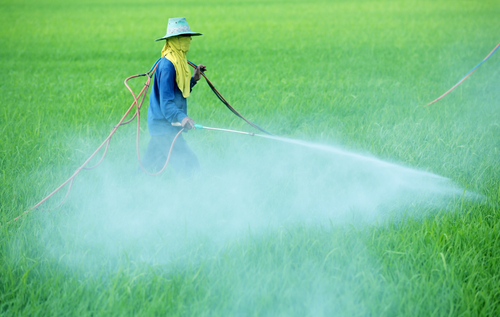 |
Of all the proposed changes to EPA’s WPS for agricultural workers, the new training requirements are the most involved and intended to have the most impact when it comes to protecting workers and their families from pesticide exposure. It should be noted that many of the proposed changes described yesterday also have a training element involved to ensure that workers and pesticide handlers understand them going forward. Proposed changes may apply to both workers and to handlers, and the EPA anticipates they will add about 15 minutes to the training already required in the WPS.
First, the EPA is proposing to require worker and handler training each year, instead of every 5 years as in the past. The EPA is also proposing that those providing training to workers complete a pesticide safety train-the-trainer program that is approved by the EPA or that they be certified as trainers of certified applicators by the EPA or the agency with jurisdiction. The existing categories for trainers of pesticide handlers will be retained with the added requirement that the train-the-trainer program is EPA approved. All trainers of workers and handlers will also be required to be present during the entire training session, answer questions, and ensure the training is provided free of distractions.
Get free access for 14 days to 20 environmental training courses from TrainingToday. From asbestos awareness to stormwater pollution prevention, we’ve got you covered. Get access now.
Regarding timing of initial training, the EPA proposes to limit the grace period for employers to 2 days. This essentially means that workers that have not been fully trained but have been provided “essential safety information” may perform WPS tasks in pesticide-treated areas for no more than 2 days before being provided with full pesticide training. Related records must also be maintained for 2 years.
Another proposed change is the expansion of existing information and training about protection from pesticide take-home exposures. Multiple research studies have shown there is an elevated risk of pesticide exposure in homes of agricultural workers, and the EPA believes specific training about how to minimize pesticide take-home exposure could lower risk and increase safety, including:
- Washing before touching family members,
- Removing soiled work boots or shoes before entering the home,
- Washing clothes exposed to pesticide residues before wearing them again and washing them separately from other family clothes,
- Keeping family members away from treated areas, and
- Information on the potential risks from pesticide exposure to children and pregnant women.
Get everything you need to understand and increase awareness of environmental management practices at your company. Request 14-day free access to 20 environmental training courses from TrainingToday.
In line with the proposed adoption of Hazard Communication Standards that included providing application-specific information, labeling, and safety data sheets (SDSs) to workers, handlers, or their authorized representatives, the proposed WPS also proposes that an overview of these new requirements and information be provided within the context of the training program for workers and handlers.
With the proposed adoption of the Occupational Safety and Health Administration’s (OSHA) respirator standard, employers would also be required to provide training and all other requirements as specified in 29 CFR 1910.134 for the type of respirator specified on the pesticide product label.
Another proposed training requirement is instruction about worker rights and the prohibition on retaliation for attempting to comply with the WPS or for reporting suspected WPS violations. The EPA believes this training will not only help protect workers from pesticide exposure but will also assist agencies with enforcement investigations for violations of the WPS.
Again, owners of agricultural establishments and their immediate families are exempt from most of the WPS requirements. However, employees who are not members of the immediate family must be provided all the training and other WPS information and equipment as provided in the regulation.
